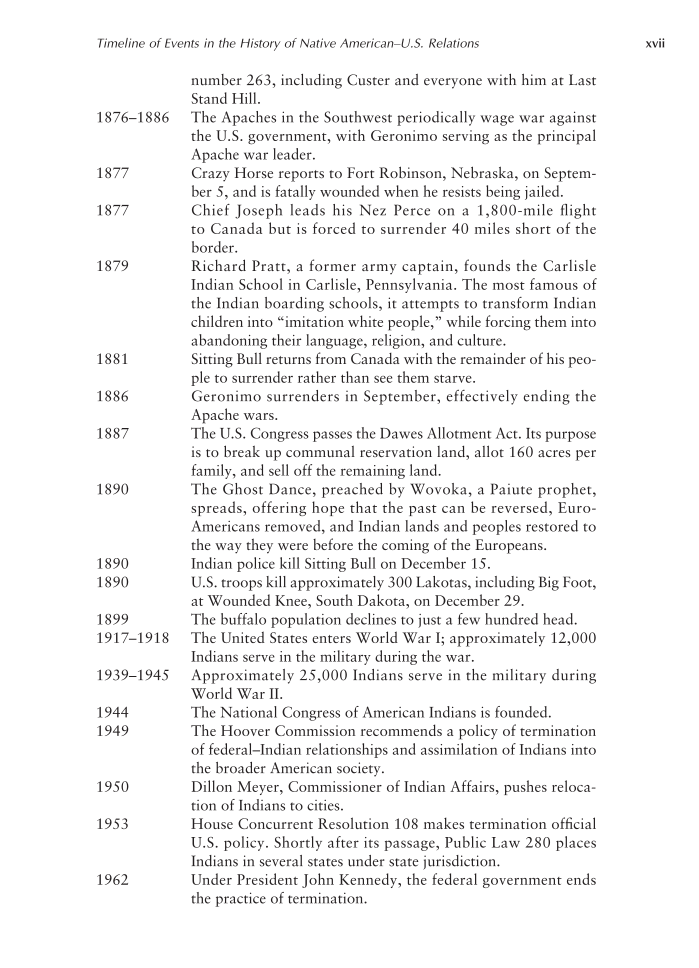number 263, including Custer and everyone with him at Last Stand Hill. 1876–1886 The Apaches in the Southwest periodically wage war against the U.S. government, with Geronimo serving as the principal Apache war leader. 1877 Crazy Horse reports to Fort Robinson, Nebraska, on Septem- ber 5, and is fatally wounded when he resists being jailed. 1877 Chief Joseph leads his Nez Perce on a 1,800-mile flight to Canada but is forced to surrender 40 miles short of the border. 1879 Richard Pratt, a former army captain, founds the Carlisle Indian School in Carlisle, Pennsylvania. The most famous of the Indian boarding schools, it attempts to transform Indian children into “imitation white people,” while forcing them into abandoning their language, religion, and culture. 1881 Sitting Bull returns from Canada with the remainder of his peo- ple to surrender rather than see them starve. 1886 Geronimo surrenders in September, effectively ending the Apache wars. 1887 The U.S. Congress passes the Dawes Allotment Act. Its purpose is to break up communal reservation land, allot 160 acres per family, and sell off the remaining land. 1890 The Ghost Dance, preached by Wovoka, a Paiute prophet, spreads, offering hope that the past can be reversed, Euro- Americans removed, and Indian lands and peoples restored to the way they were before the coming of the Europeans. 1890 Indian police kill Sitting Bull on December 15. 1890 U.S. troops kill approximately 300 Lakotas, including Big Foot, at Wounded Knee, South Dakota, on December 29. 1899 The buffalo population declines to just a few hundred head. 1917–1918 The United States enters World War I approximately 12,000 Indians serve in the military during the war. 1939–1945 Approximately 25,000 Indians serve in the military during World War II. 1944 The National Congress of American Indians is founded. 1949 The Hoover Commission recommends a policy of termination of federal–Indian relationships and assimilation of Indians into the broader American society. 1950 Dillon Meyer, Commissioner of Indian Affairs, pushes reloca- tion of Indians to cities. 1953 House Concurrent Resolution 108 makes termination official U.S. policy. Shortly after its passage, Public Law 280 places Indians in several states under state jurisdiction. 1962 Under President John Kennedy, the federal government ends the practice of termination. Timeline of Events in the History of Native American–U.S. Relations xvii
Document Details My Account Print multiple pages
Print
You have printed 0 times in the last 24 hours.
Your print count will reset on at .
You may print 0 more time(s) before then.
You may print a maximum of 0 pages at a time.










































































































































































































































































































































































